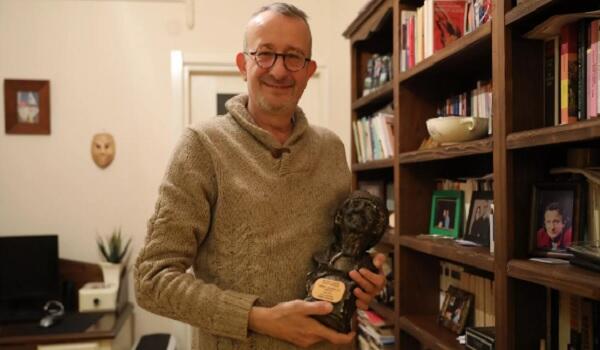Axar.az presents an article "Who Does The Chores? " by John Samuel Tieman.
A buddy, a psychiatrist, was speaking of couples therapy. So I asked, “What's the most common marital problem couples discuss with you?” I expected sex, money, religion, politics. But no. “Household chores,” he said.
Women work more outside the home, yes, but do they now work less inside the home? Are household chores shared equally? In many ways, we have fast-changing women in a slow-changing society. When I was an undergraduate, I was profoundly influenced by feminism. I presumed the men of my generation were likewise so influenced. I further presumed that this influence would continue into the next generation. I was a little right, and a lot wrong.
Arlie Hochschild's “The Second Shift” was published in 1989. It's about chores. Chores and a lot more. But mostly chores. Laundry. Dishes. Child care. Mow the lawn. Cooking. Who changes the oil in the car? Who changes the bed linens? She writes, “Most women work one shift at the office or factory, and a ‘second shift’ at home.”
Hochschild is a professor emeritus of sociology at the University of California, Berkeley. In the 1970s, she did research for her book by observing dozens of families. She writes that in practice there are three patterns of family, the traditional family, the transitional, and the egalitarian. In the traditional family, the woman identifies with her role in the home, and the man identifies with his work outside the home. In the egalitarian family, the man and the woman identify equally with home and work. For those in a transitional family, there's a blending of both the traditional and the egalitarian. Folks in traditional and egalitarian marriages have little difficulty with the chores that attend upon their roles. Folks in traditional marriages tend not to question their roles and, further, generally have the support of the culture that surrounds them. Folks in egalitarian marriages share their burdens equally. Couples in transitional marriages, however, they're the ones with the most troubles. Transitions are always opaque, uncertain, and seem indeterminate.
Not all chores are created equal. Mowing the lawn does not equal making the meals. For one thing, there is a time difference. Cooking each day takes much longer than mowing once every few weeks. For another, food needs to be prepared every day, whereas mowing the lawn can be done whenever. You can say, “I don't think I'll mow the lawn this week.” You can't say, “I don't think we'll eat this week.” Nor does taking care of the dog equal taking care of the child.
Dr. Hochschild points out that a remarkable amount of social change has occurred in barely a single generation. Think from Mamie Eisenhower to Hillary Clinton. Nonetheless, Prof Hochschild speaks of “a stalled revolution”, one in which gender equality can be seen but can't be attained. Hochschild interviewed women who worked an average of 15 more hours a week than their male counterparts. That's an extra month of 24-hour days each year. Women did the bulk of housework and child care. “[T]hese women talked about sleep the way a hungry person talks about food.”
Tensions in such families abound. Hochschild’s subjects fight about their paid work, the housework, the child-rearing. Then there's the wife who created an alternating schedule for cooking, her one day, him the next – except the husband would forget to cook on his day.
In the 34 years since the first publication of “The Second Shift”, there have been some notable changes. Studies also indicate that the book is far from superannuated. One study, by Kayla Van Grop, found that even though the amount of necessary housework has experienced a substantial decrease, in part due to technology, women are still disproportionately responsible for core household work, cooking, cleaning, the more tedious aspects of child care. Women today still work five more hours per week than their male partners. In its way, perhaps the most disturbing finding is that household chores are still often considered “women's work”.
Recent economic trends play no small role in the current “second shift”. In a 2014 interview with the “Washington Post”, Hochschild says of our widening class gap that “the more people fall into the lower class, the more bad news. We know that – more alcoholism, more mental health problems, more second shift for women.”
So “the second shift” still exists. It is still predominantly women who perform the core household tasks. The amount of work that is required for the second shift has diminished. Women now work 5 hours more a week rather than 15. So an extra 10 days a year rather than an extra month. OK, that's an improvement. But “the second shift” still exists.
There is one other thing that has not changed. Marriage is at its best when it allows each partner to freely work toward their greatest potential. That will never change.












































.jpg)









